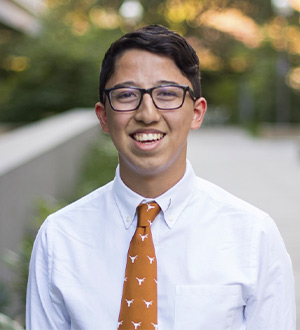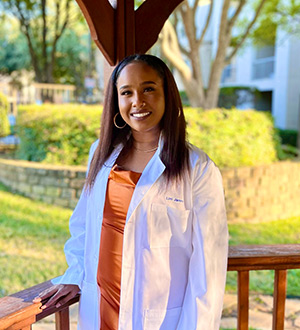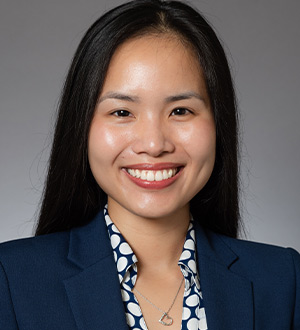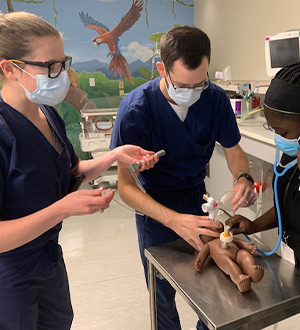JAMP gives economically disadvantaged students a pathway to medical school

Applying to and then completing four years of medical school is challenging enough without the added burdens that students from economically disadvantaged families often face. Minus mentors or financial support, preparation for entrance exams and interviews can be daunting, said Keonnie Parrilla, who moved from Guatemala to Texas with his mother when he was 5 years old.
“I had been interested in medicine for years because I wanted to give back to rural communities that lack access to health care,” said Mr. Parrilla, a third-year UT Southwestern Medical School student. “But I had no idea what applying for medical school would entail or even how to do it.”
The 2019 UT Austin graduate found the guidance he needed through the Joint Admission Medical Program (JAMP), a state-funded initiative that provides support and encourages economically disadvantaged students to matriculate into medical school.
“Coming from a Third World country has influenced me to want to work with a Spanish-speaking population, which luckily is abundant in Dallas,” said Mr. Parrilla, who is leaning toward family medicine as a specialty.

Established by the Texas Legislature in 2003, JAMP provides a pathway to medical school for economically disadvantaged students. Through a vigorous selection process with assistance from participating Texas medical schools, eligible applicants are interviewed, and then 100 are accepted statewide into the program each year, based on criteria established by the Legislature. Students apply during their freshman year of college.
“JAMP helps students acquire the skills and knowledge to be successful future physicians by providing mentoring, summer enrichment programs, and guaranteed acceptance to one of 13 participating Texas medical schools,” said Benjamin Nguyen, M.D., Professor of Physical Medicine and Rehabilitation at UT Southwestern and current Chair of the JAMP Council.
UT Southwestern is among the original nine medical schools in Texas to join the program. Those interested in learning more about JAMP can go to texasjamp.org.
Once accepted, JAMP students are eligible for mentorship and support at one of the 68 participating public and private undergraduate institutions in Texas. Between their sophomore and junior undergraduate years, JAMP students take classes in critical thinking mastery, biology, and chemistry in preparation for the Medical College Admission Test, or MCAT. Then the following summer, JAMP students participate in an internship focused on team building and interview skills while taking medical school-level courses. Students have an opportunity to shadow a physician as well as attend clinics involving patient encounters under the supervision of physician/clinician providers. During these summer internships, students interact with and are mentored by current medical students.
Limi Jamma, the daughter of Ethiopian immigrants, said JAMP helped her navigate the educational system. She is a fourth-year UTSW medical student who graduated from UT Austin with a biochemistry degree.

“JAMP offered an MCAT prep course, a network of pre-med JAMP students, and two summer internships where I was able to get a glimpse of the medical school curriculum and have medical student mentors to help guide me in my journey,” said Ms. Jamma. “During these internships, I was able to check out many more specialties that I had struggled on getting the opportunity to explore beforehand.”
Nguyen Tran, who at age 15 moved with her family from Vietnam to Texas and faced financial hardships, discovered JAMP during college orientation. Ms. Tran knew instantly it was what she needed.
“The program provided me with mentorships from physicians and medical students as well as MCAT preparation courses that together helped me become the best candidate I could be for medical school,” said the fourth-year UTSW medical student. Ms. Tran, who also graduated from UT Arlington, noted that JAMP members all share a burning passion for reducing health disparities and for serving vulnerable communities, which is one of the main reasons for her pursuit of medicine.

“All JAMP members come from socioeconomically disadvantaged backgrounds and have firsthand experience in how health care disparities affect our communities and family members,” Ms. Tran said. “Through talking to my fellow JAMPers, I have gained insight into the unique challenges that their respective communities face in obtaining quality health care.”
After graduating from medical school, JAMP students can apply to any residency program in the country, although many stay in Texas. Since 2010, 95 JAMP participants have graduated from UT Southwestern Medical School, with 44% choosing primary care.
Olivia Russell, M.D., who grew up in a single-parent home in Houston and worked summers since the age of 16 years to help support her family and save for education, said JAMP was invaluable in helping her become a physician. The 2018 UTSW Medical School graduate is currently completing a fellowship in neonatal-perinatal medicine at UT Houston, with plans to work as an attending neonatologist.
“I don’t think I’d be where I am today if it wasn’t for JAMP,” Dr. Russell said. “I think serving as a JAMP summer mentor and instructor helped fuel my passion for teaching and academic medicine, taught me how to be a better teacher and now, as a fellow, I’m able to use those skills when I work with medical students and residents.”


